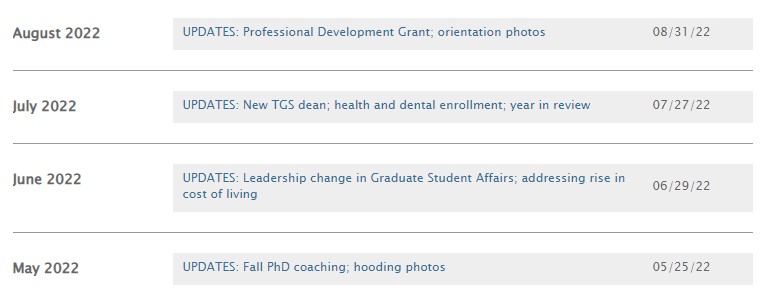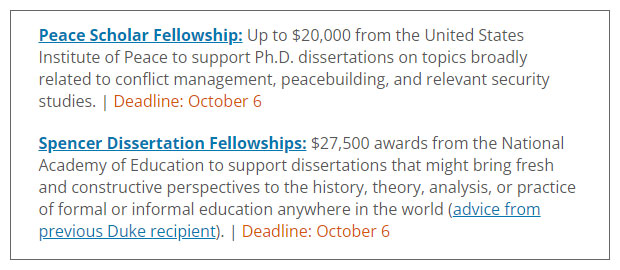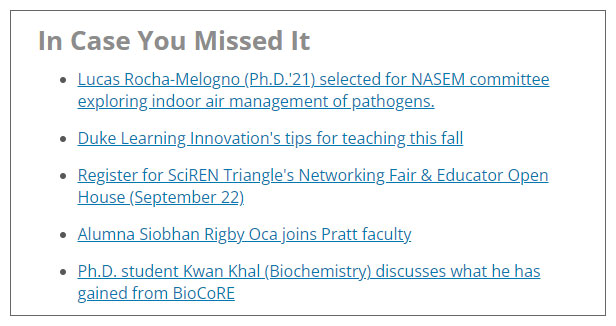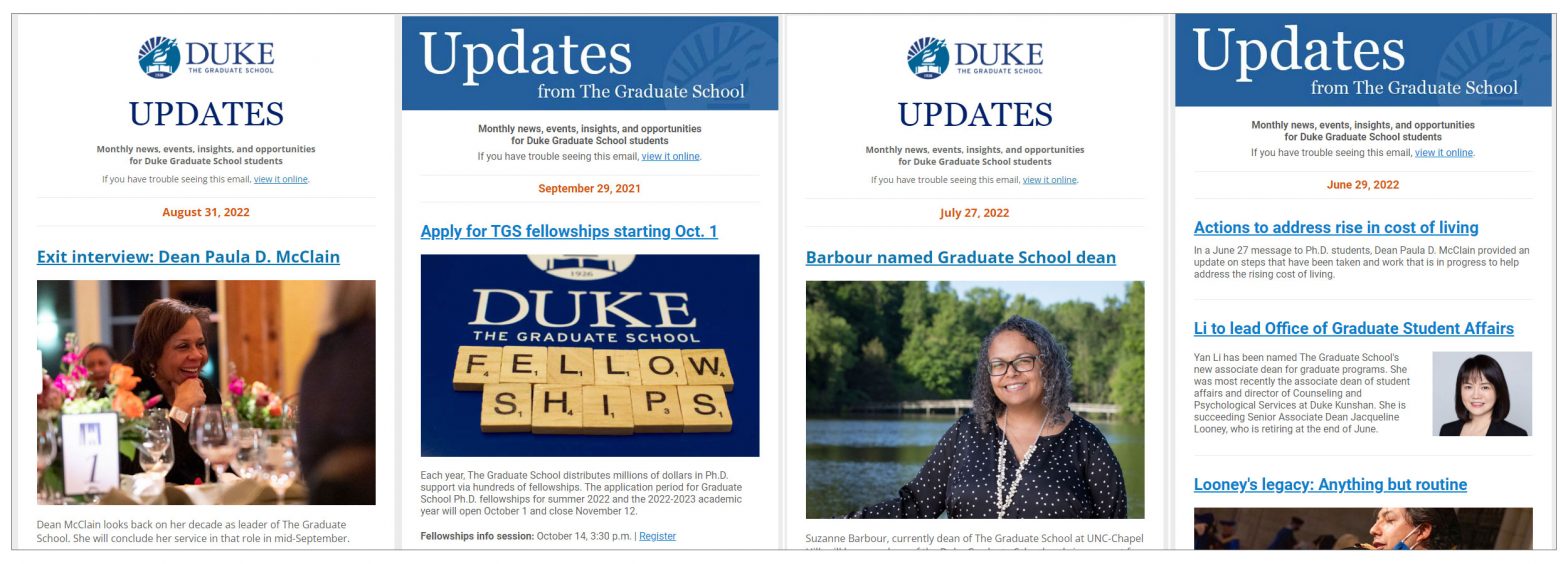When I joined the Duke Graduate School in 2014 to build and oversee its communications operation, the school had one newsletter that was sent out as a PDF three times a year with no tracking to measure success. Over the course of my first year, I developed a vastly improved email newsletter that effectively reached students and provided analytics to help measure success and guide future efforts.
I had three major strategies for revamping the newsletter: 1) make it more frequent, 2) make it more useful, and 3) make it mirror the way The Graduate School supports its students.
More Frequent
This was easy enough to accomplish. I turned the newsletter from three times a year to a monthly publication. This made it a much more frequent touch point with students and significantly changed the type of communication tool it could be, as now we could include information that is much more time-sensitive.
I also changed the tone and style of the newsletter. Previously, it was lengthy and verbose. Now, it adopts an approachable, succinct tone. Each item is limited to just a couple lines, plus a link to more information. Images are used judiciously, usually for the top two or three items. I have also tweaked the design of the newsletter over the years to make it cleaner and easier to skim. The newsletter now delivers information much more efficiently.
More Useful
The above changes fed into strategy No. 2 by expanding the type of information we could include in the newsletter to make it more relevant and useful to students. I made a strategic decision to make the newsletter laser-focused on the school’s current graduate students. This would not be an all-purpose publication that tries to be all things to six different audiences from prospective students to alumni. Instead, it would work really hard to meet the needs of one audience — our current students.
That focus is reflected in the newsletter’s content selection and prioritization. Rather than leading with self-congratulatory stories about our accomplishments or feel-good features about this or that lofty new initiative to transform higher ed, the newsletter leads with “meat-and-potato” issues. For graduate students that often means funding and career development resources. Those topics were also among the top forms of support that The Graduate School provided, so it made sense to highlight them. This not only increases awareness of those resources, but also to increase awareness of The Graduate School’s value to its students.
That approach carried over to how I crafted email subject lines. Again, I made sure these focused on tangible, useful resources. This decision was guided by data, which we now had because I switched the newsletter to an email marketing platform and began tracking open and clickthrough rates. Analytics showed that, not surprisingly, subject lines mentioning financial resources tended to generate greater open rates. So I made it a point to highlight funding opportunities whenever possible.

About a year after relaunching the newsletter, I leaned even more heavily into focusing on useful resources by adding a section to each issue that listed about a dozen Duke and external funding opportunities. That section also includes a link to Duke’s database of graduate student funding opportunities. The goal of adding the section was to not only make students aware of some upcoming opportunities, but also to show them the different types of opportunities that they might not have thought of and encourage them to check out the Duke database to find more.

Judging by analytics, this section has become something students look for. Even though the section is toward the bottom of the newsletter, its entries are often among the most clicked. This suggests that students are scrolling through the whole newsletter to get to this section. We also have anecdotes from students about finding and successfully applying for funding opportunities from that section.
Mirror the School’s Approach IRL
As mentioned above, the focus on funding and career development opportunities has the added benefit of highlighting two areas where The Graduate School offers significant value to its students. Focusing on them, therefore, creates opportunities to convey the school’s value to students, which has been one of the school’s big-picture communication strategies.
Beyond promoting The Graduate School’s own resources, opportunities, and news, the newsletter takes an inclusive approach to content curation. We actively curate content from the rest of the university and welcome submissions from other units as long as they are directly relevant and useful for our students. I also added an “In Case You Missed It” section at the end of the newsletter, which compiles links to recent stories of interest produced by other Duke units or external organizations.

This approach mirrors The Graduate School’s collaborative approach to supporting its students and connecting them with resources from all across the university and beyond. Partnership with other units is critical to the school’s work in real life, and our newsletter embodies our embrace of working across departments and boundaries to achieve our mission of giving our students the best support Duke has to offer.
Results
Over the course of several years, I have built the newsletter into an important part of The Graduate School’s communications toolkit. The newsletter boasts a robust open rate that has steadily improved. The newsletter is also a significant driver of visits to the school website, sending students to pages about resources and upcoming events. Most importantly, the newsletter has become a useful source of information for students, keeping them informed about opportunities that help them succeed.

